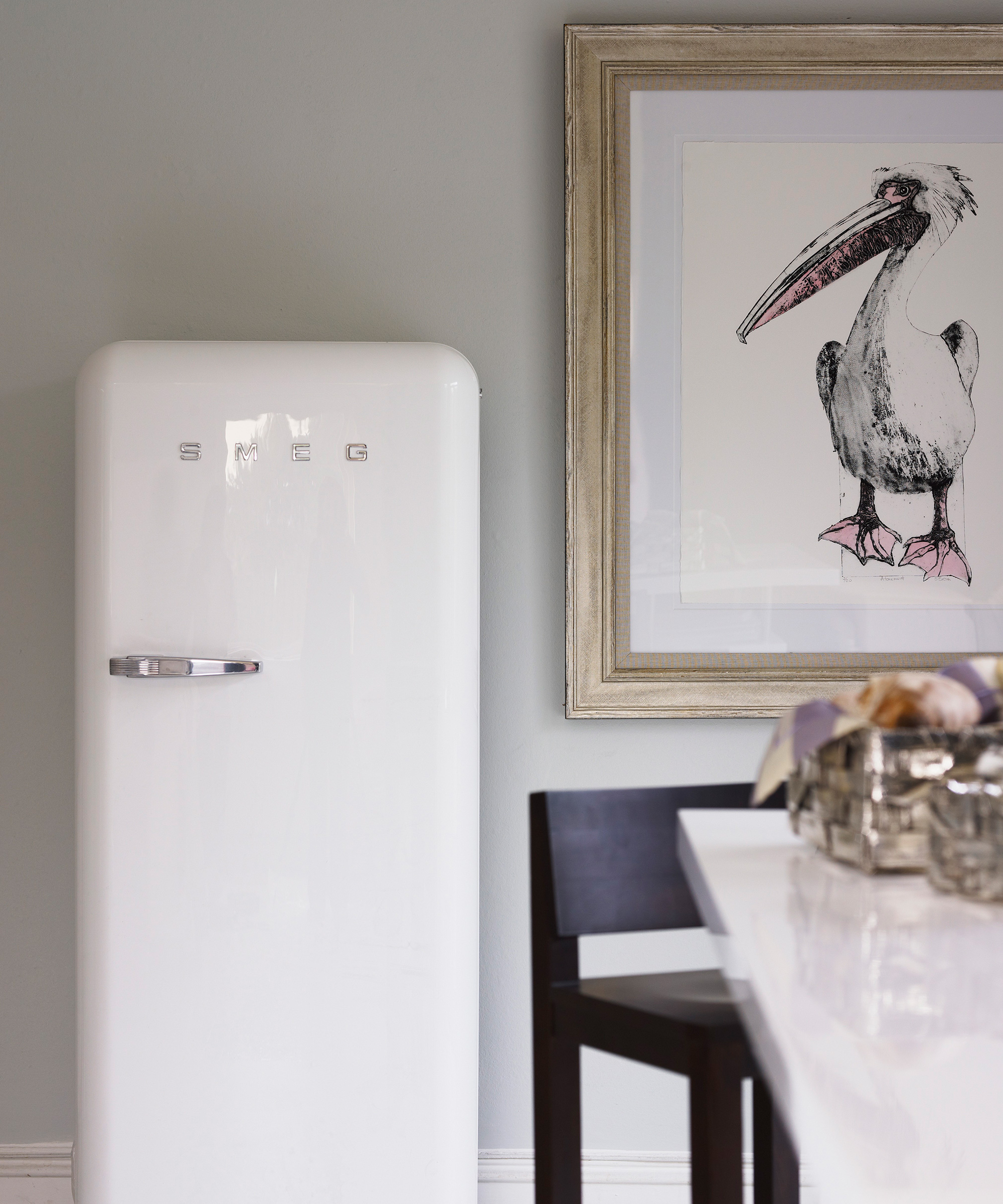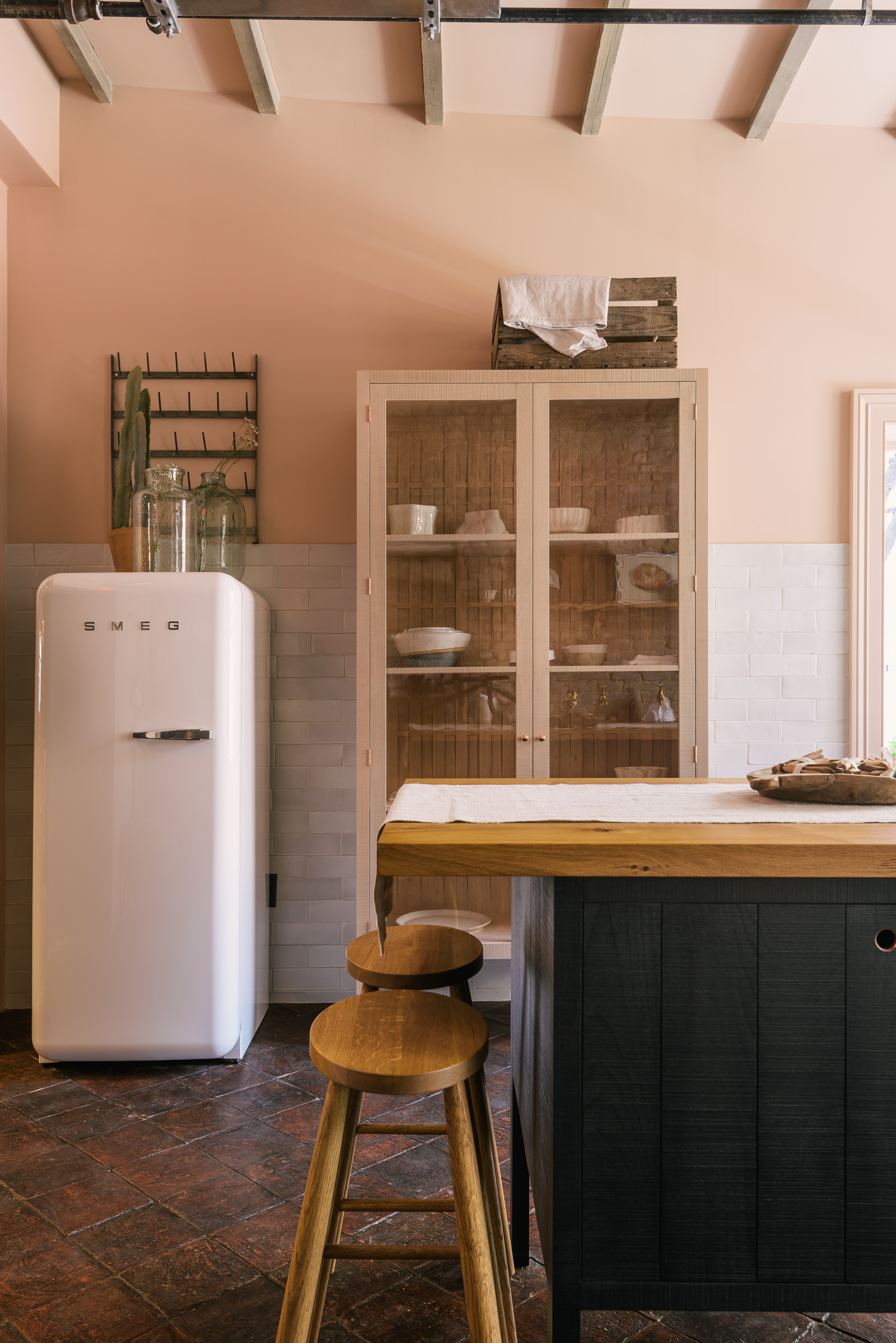How to clean coils on a fridge – 5 steps experts advise to reduce energy costs
Wondering how to clean coils on a fridge? Here are 5 cost-effective and eco-conscious steps


Knowing how to clean coils on the fridge may not be at the top of your to-do list when it comes to chores in the kitchen. When cleaning a kitchen it can feel natural to begin with your floor or countertops – the large surface areas that seemingly make all the difference.
While knowing how often to clean a fridge and how to clean coils on a fridge may initially seem insignificant, it can make a big difference to your fridge's lifespan – and may even impact your energy costs. So, it's essential not to overlook this task.
How to clean coils on fridge – expert steps to an efficient appliance

'Cleaning coil fridge can decrease the energy consumption of fridge, and it will affect on your bill,' says home improvement expert David Smith. This is because higher energy costs can occur when coils are dirty, and your fridge is forced to work harder to keep your food cold.
When buying a refrigerator, the new coils should work effectively. However, there is a greater need to know how to clean coils on a fridge you've had for a few months or years. This is what the process involves.
1. Prepare your fridge for cleaning
Firstly, David urges you to ensure your fridge is turned off completely. 'Take out all plugs and check there is no electricity wire is connected with fridge,' he says. The expert then suggests pulling your fridge away from the wall (keeping a distance at which you can easily access the coils).
2. Remove dust from the coil
Once you have access, you should remove the back of your fridge it with a screwdriver [such as this one on Amazon]. This will give you access to the coil.
'To remove dust from coil you can use air compressor or blower to the fridge's coil which is very simple by using compressor or blower,' David says. He adds that you can also remove dust manually, using tools such as a brush, but this is more of a time-consuming task.
Design expertise in your inbox – from inspiring decorating ideas and beautiful celebrity homes to practical gardening advice and shopping round-ups.

3. Conclude the clean
'After cleaning the fridge coil, take the back cover of the fridge. Then you can keep that fridge at previous location behind the wall,' the expert says.
How often should you clean refrigerator coils?
'You should regularly clean your coils, preferably twice a year, as when the coils become clogged with grime, they no longer efficiently release heat,' says electrical expert Martin Desmond. 'This means your fridge's compressor must work overtime for longer than it was originally designed to do – and, in turn, uses more energy and shortens its lifespan.'
David also recommends repeating this process every six months. [This will] keep the fridge in good condition and lead to less consumption of electricity,' he adds.

What happens when refrigerator coils are dirty?
As the experts suggest, it is important to know how to clean coils on a fridge for efficiency reasons. If your coils are filled with dust and debris, it will struggle to release the appropriate heat – consequently using more energy and impacting your bill.
'While the kitchen idea may seem small, it has a significant impact on the health of your refrigerator,' says H&G's Editor in Chief, Lucy Searle. 'If we keep on top of the cleaning every six months, then the long-term benefits will surely arrive over time.'

Megan is the Head of Celebrity Style News at Homes & Gardens, where she leads the celebrity/ news team. She has a history in interior design, travel, and news journalism, having lived and worked in New York, Paris, and, currently, London. Megan has bylines in Livingetc, The Telegraph, and IRK Magazine, and has interviewed the likes of Drew Barrymore, Ayesha Curry, Michelle Keegan, and Tan France, among others. She lives in a London apartment with her antique typewriter and an eclectic espresso cup collection, and dreams of a Kelly Wearstler-designed home.